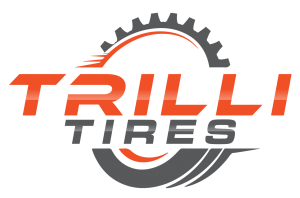As winter approaches, drivers face the critical decision of buying the right tires for their vehicles. In contrast, all-season tires may seem like a convenient choice, winter economy tires offer specific advantages that can enhance safety, performance, and cost-effectiveness during the colder months. This article explores the benefits of using winter economy tires and why they may be the superior option for drivers navigating harsh winter conditions.
Understanding Winter Economy Tires
Winter economy tires are specifically designed to provide optimal performance in cold weather, snow, and icy conditions. Unlike all-season tires, which are built for versatility year-round, these tires prioritize traction, handling, and safety in winter scenarios. Their unique tread designs and specialized rubber compounds allow them to maintain flexibility in low temperatures, ensuring reliable grip and control when it matters most.
Enhanced Traction and Handling
One of the most significant advantages of winter economy tires is their enhanced traction. The tread patterns of these tires feature deeper grooves and more biting edges, which allow them to grip snowy and icy surfaces more effectively than all-season tires. This means that drivers can experience improved stability and control when making turns or stopping in winter conditions.
All-season tires, while capable of handling light snow, often struggle to provide the same level of traction as winter tires. Their tread compounds can harden in cold temperatures, reducing grip and increasing stopping distances. By opting for winter tires, drivers can significantly improve their vehicle’s performance, enhancing safety on slippery roads.
Better Performance in Extreme Cold
Winter economy tires are crafted from specialized rubber compounds designed to remain pliable even in extreme cold. This flexibility is crucial, as it allows the tire to conform to the road surface, maintaining better contact and grip. In contrast, all-season tires may become rigid in freezing temperatures, compromising their performance.
When the mercury drops, the difference in performance becomes evident. Winter economy tires can help drivers navigate icy patches and packed snow with confidence, reducing the likelihood of skidding or losing control. For those living in regions that experience harsh winters, investing in dedicated winter tires can be a game-changer.
Improved Braking Distance
Braking performance is a critical safety factor, especially during winter months when stopping distances can increase significantly. Studies have shown that winter economy tires can reduce braking distances on snow and ice compared to all-season tires. The unique tread designs and softer compounds of winter tires allow for more effective traction during braking, helping drivers stop quicker and more safely.
For example, a vehicle equipped with winter economy tires can stop at significantly less distance than one with all-season tires when navigating icy roads. This advantage can be crucial during emergency situations, where every inch counts.
Increased Longevity and Cost-Effectiveness
Another often-overlooked benefit of winter economy tires is their potential for cost-effectiveness. While the initial investment may seem higher than that of all-season tires, winter tires are specifically engineered for cold weather. By using them during winter months and switching back to all-season or summer tires during warmer weather, drivers can extend the lifespan of both sets of tires.
Moreover, winter tires can help reduce wear and tear on all-season tires. Driving on winter roads with all-season tires can lead to faster deterioration, ultimately necessitating more frequent replacements. By investing in dedicated winter tires, drivers can maximize the longevity of their entire tire set, resulting in long-term savings.
Enhanced Fuel Efficiency
Many winter tires are designed to optimize rolling resistance, which can positively impact fuel efficiency. While all-season tires are built for versatility, they may not be as efficient in cold weather conditions. The specialized tread patterns and lighter construction of winter economy tires often result in reduced rolling resistance, allowing for better fuel economy during the winter months.
For drivers looking to save on fuel costs, choosing the right tires can play a significant role. By selecting winter economy tires, they may find that they can achieve better mileage, ultimately offsetting some of the initial costs associated with buying tires.
Availability of Tire Rebate Programs
During tire rebate season, many manufacturers offer incentives to encourage drivers to purchase winter tires. These rebates can significantly lower the overall cost of investing in winter economy tires. By taking advantage of these promotions, drivers can obtain high-quality tires at a more affordable price.
Checking with local tire retailers or mechanic shops can provide insights into current rebate offerings. This proactive approach not only saves money but also enhances safety and performance during winter months.
Expert Recommendations and Installation
Choosing the right tires is only part of the equation; proper installation is crucial for achieving optimal performance. Visiting a reputable mechanic shop ensures that tires are mounted and balanced correctly, enhancing their effectiveness. Expert technicians can also provide guidance on selecting the best winter economy tires for specific driving needs and conditions.
When purchasing winter economy tires, consider seeking out professionals who can offer recommendations based on driving habits, vehicle types, and typical winter conditions in your area. Their expertise can help ensure that you make the best decision for your safety and performance.
Final Words
In summary, winter economy tires offer numerous advantages over all-season tires, particularly for those living in regions with harsh winter weather. With enhanced traction, better performance in cold conditions, improved braking distances, and potential cost savings, these specialized tires are an investment worth considering.
As winter approaches, don’t overlook the importance of equipping your vehicle with the right tires. Explore options for winter tires, take advantage of tire rebate season, and consult with experts at your local mechanic shop to ensure a safe and efficient driving experience throughout the winter months.
For high-quality winter economy tires, contact TrilliTires in Richmond Hill to find the perfect fit for your vehicle and driving needs.



